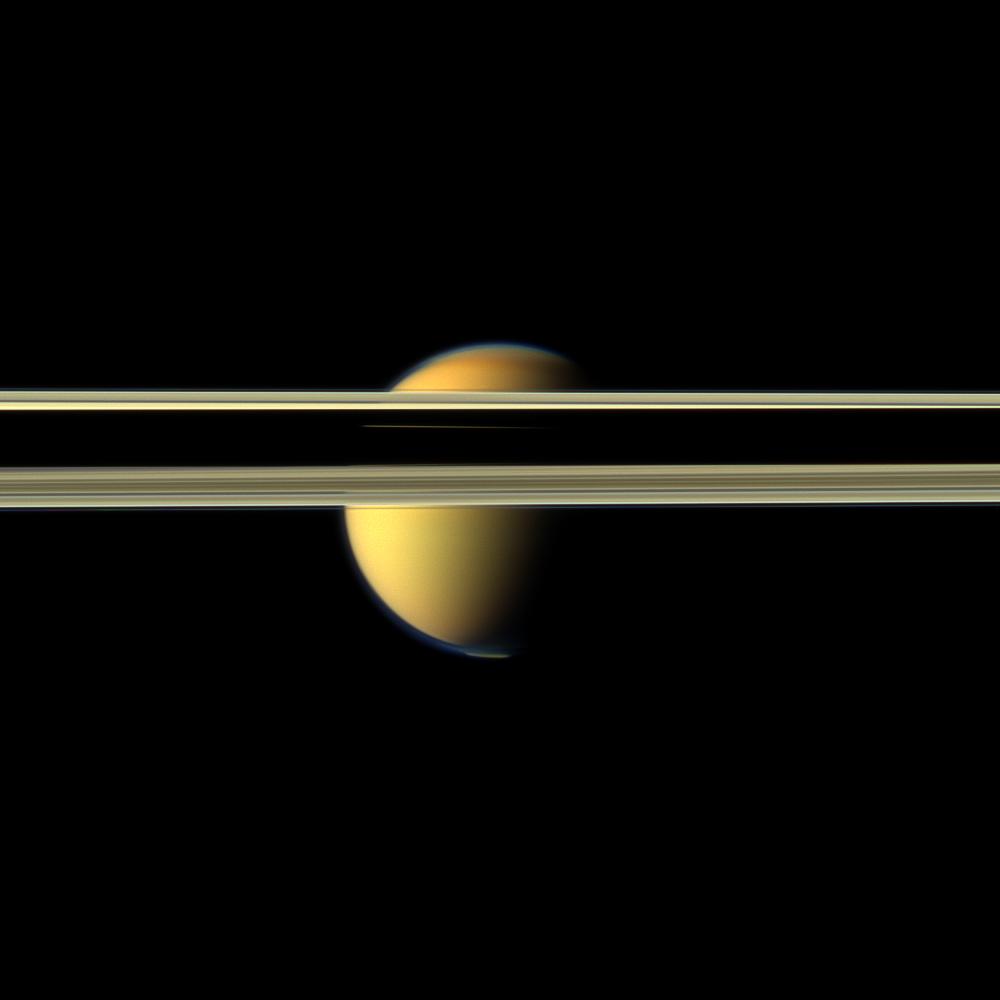Obscured by Rings

| PIA Number | PIA14923 |
|---|---|
| Language |
|
Saturn's rings obscure part of Titan's colorful visage in this image from NASA's Cassini spacecraft.
The south polar vortex that first appeared in Titan's atmosphere in 2012 is visible at the bottom of this view. See PIA14919 and PIA14920 to learn more about this mass of swirling gas around the pole in the atmosphere. The south polar vortex was not present earlier in the mission (see Titan Beyond the Rings and Titan Upfront). Titan is 3,200 miles (5,150 kilometers) across.
The northern part of the moon's atmosphere visible here includes the north polar hood, a cap of haze looking slightly darker than the rest of the atmosphere and seen near the top of the moon. See Haze Layers on Titan to learn more about the north polar hood.
Parts of the rings appear dark near the center of this view because of the shadow cast by the planet. However, a sliver of illuminated Titan can be seen through the Cassini Division in the rings near the middle of this darkness.
This view looks toward the northern, sunlit side of the rings from just above the ring plane.
Images taken using red, green and blue spectral filters were combined to create this natural color view. The images were obtained with the Cassini spacecraft narrow-angle camera on May 16, 2012, at a distance of approximately 1.9 million miles (3 million kilometers) from Titan. Image scale is 11 miles (18 kilometers) per pixel on Titan.
The Cassini-Huygens mission is a cooperative project of NASA, the European Space Agency and the Italian Space Agency. The Jet Propulsion Laboratory, a division of the California Institute of Technology in Pasadena, manages the mission for NASA's Science Mission Directorate, Washington, D.C. The Cassini orbiter and its two onboard cameras were designed, developed and assembled at JPL. The imaging operations center is based at the Space Science Institute in Boulder, Colo.
For more information about the Cassini-Huygens mission visit http://saturn.jpl.nasa.gov. The Cassini imaging team homepage is at http://ciclops.org.
Credit: NASA/JPL-Caltech/SSI
